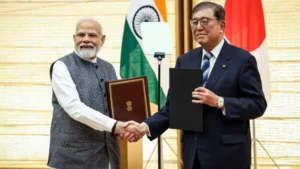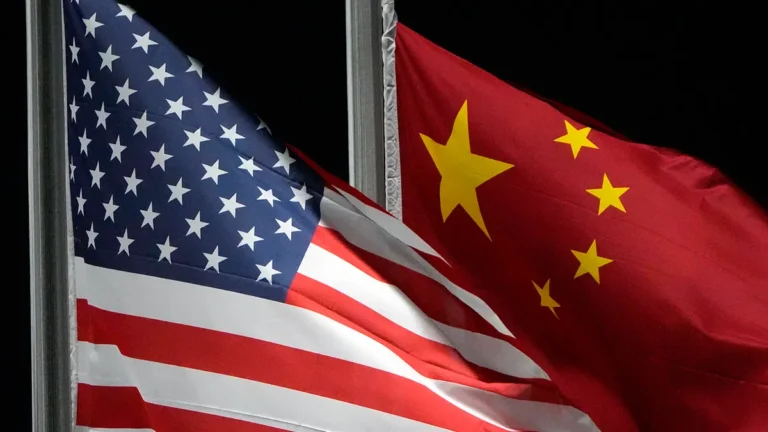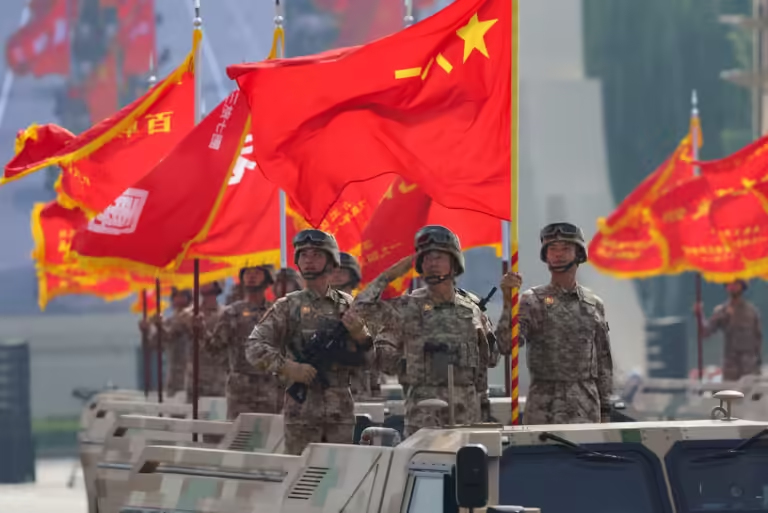India is swiftly looking to diversify its economic and diplomatic engagements. PM Modi’s visit to Japan and then China is proof. Prime Minister Modi’s recent trip to Tokyo reflected this shifting trend. Japan made record commitments to India in areas like technology, defence, semiconductors, and artificial intelligence. For India, this type of collaboration is more than just foreign investment. It is an effort to position itself as a centre of advanced manufacturing and innovation as global supply chains start to reset. Japan’s willingness to increase its economic presence in India reflects confidence in New Delhi’s stability and strategic significance.

PM Modi shakes hands with PM Shigeru Ishiba at the Joint Press Conference in Tokyo (Source: Mint)
Improving Sino-India Diplomatic Relations
India’s initial outreach to China is also significant. Modi’s visit to Beijing for a Shanghai Cooperation Organization summit last year was his first visit to China in seven years, and it was clear that he was acting gingerly, but felt required to do so. India and China are stuck in a dynamic of mistrust borne from a lingering border quarrel and strategic rivalry. However, the two countries are resuming conversations regarding reopening trade across their border.
The efforts made by both nations are to make it easier for Indian investment in China. India and China are building connectivity through flights for the first time. While the diplomatic effort doesn’t eliminate the geopolitical backdrop under which it’s occurring, it does provide India with a pragmatic avenue to assist in securing key imports. These include rare earth elements and fertilizers, crucial to India’s ability to maintain its industrial ambitions.
India’s Two-Track Diplomacy
This two-track strategy is deepening ties with Japan. Resuming the restricted space with China emphasizes India’s larger diplomatic agenda. Instead of depending on one partner, India is embarking on what could be called a multi-vector realignment. By diversifying connections in Asia, the EU, Africa, and Latin America, India is seeking to shield itself from unilateral shocks of the U.S. tariff war. It is also taking advantage of the new “China +1” strategy. Global companies are looking to diversify production away from China. With its growing domestic market, talent pool, and pro-reform government, India is the natural choice for this migration.
But it is not a risk-free transition. Japan’s enthusiasm for greater integration is moderated by its economic security and dependence issues. China, in turn, is as much a competitor as a partner. Any reconciliation will need to be carefully calibrated. Furthermore, India must overcome structural barriers like infrastructure deficits, bureaucratic bottlenecks, and energy prices. This will be advantageous for supply chain shifts. Drawing in investment commitments is not enough; translating them into lasting manufacturing capacity and exports will be the real challenge.
India using the U.S. actions as a Catalyst
The recent decision by the United States to impose steep tariffs on Indian exports has unsettled one of New Delhi’s most significant trade partnerships. With tariffs doubled on key sectors such as textiles, jewellery, chemicals, and furniture, India’s export-driven industries face a substantial shock. This move has rattled India’s stock markets and weakened the rupee, highlighting the risks of overdependence on the U.S. market. Though Washington’s move was officially justified as retaliation against India’s oil imports from Russia, it has ignited a far wider debate on India’s position within the international trading order.
The American tariffs are hurtful in the short term. This could paradoxically spur India into becoming part of a more diversified and stronger global network. Rather than being trapped in asymmetric dependence on Washington, New Delhi is using the crisis to deepen relations with Asian allies, deepen domestic reforms, and reassert strategic independence. This shift reflects India’s increasing assertiveness as a middle power. This power desires interaction with all key powers but alignment with none, driven primarily by its own economic and geopolitical needs.
For more such articles, check out the World Times.



